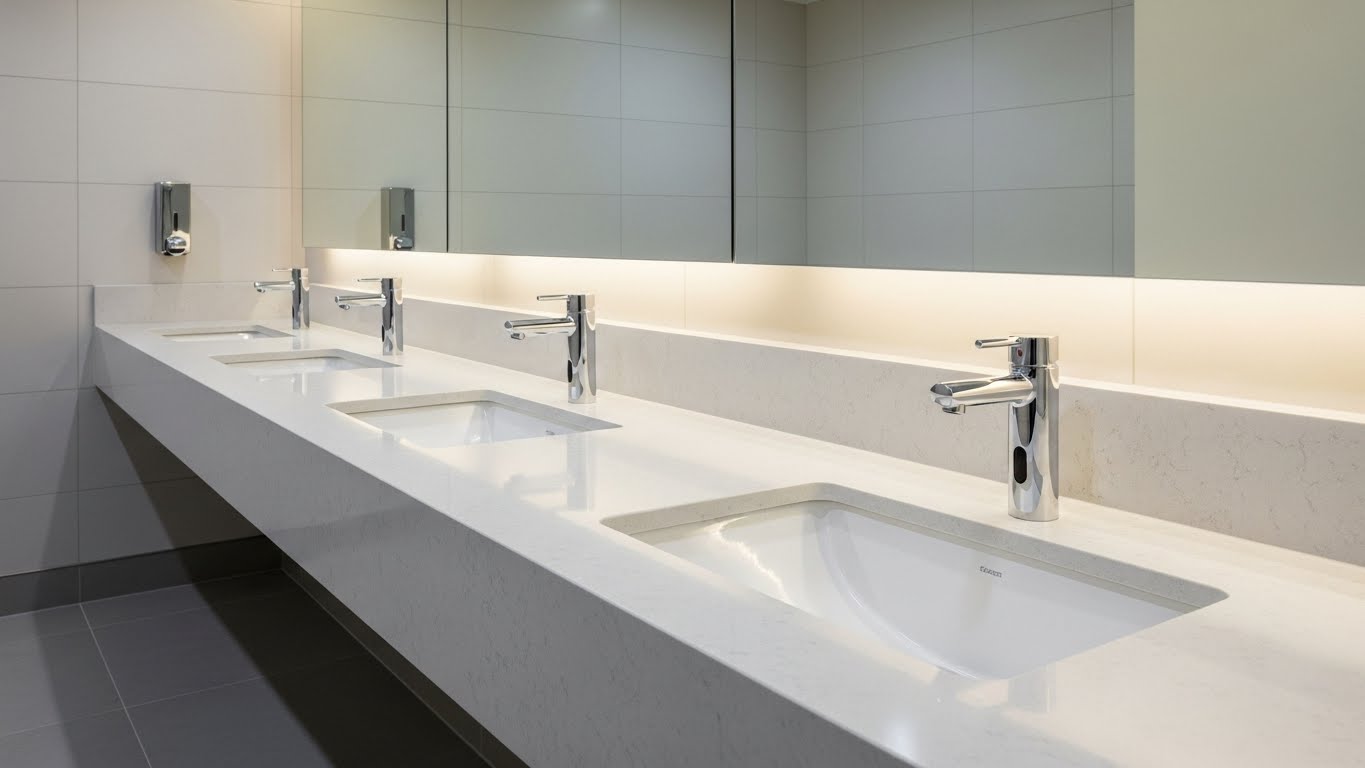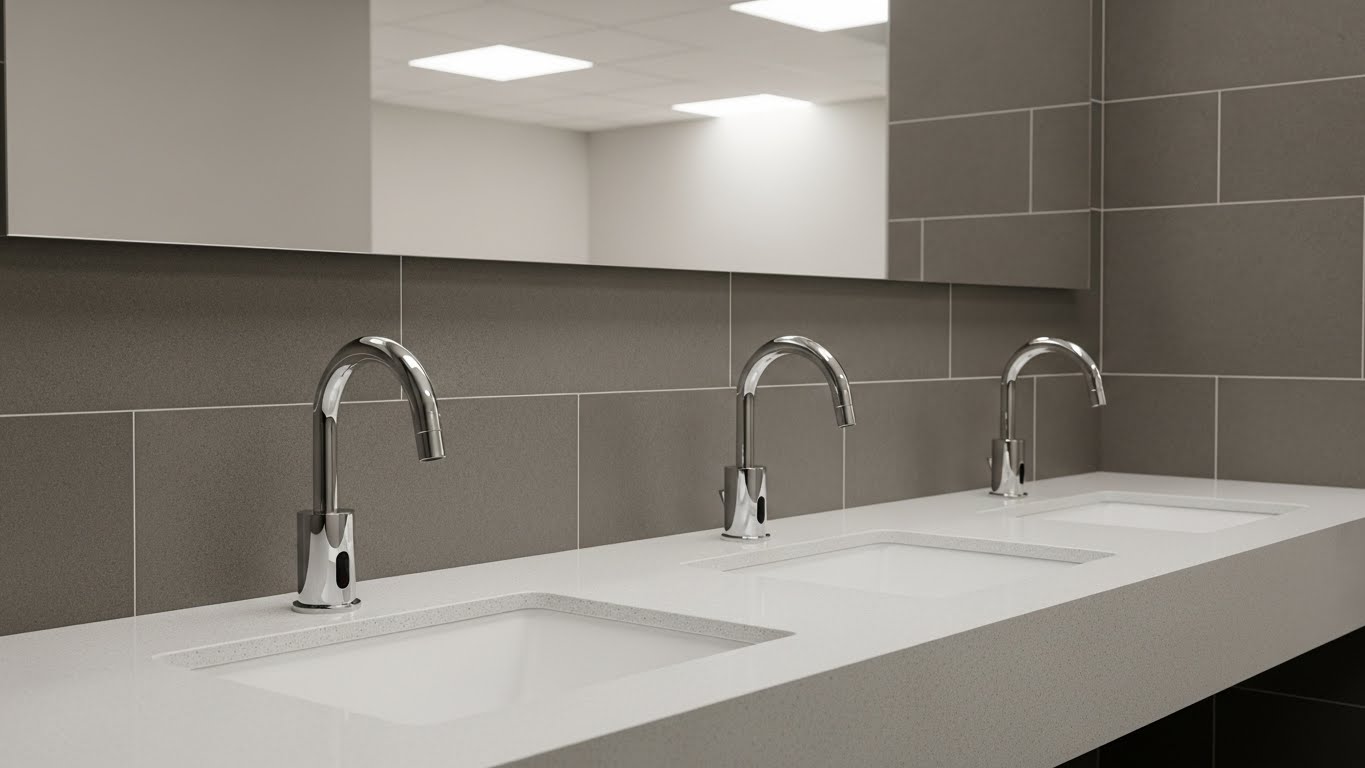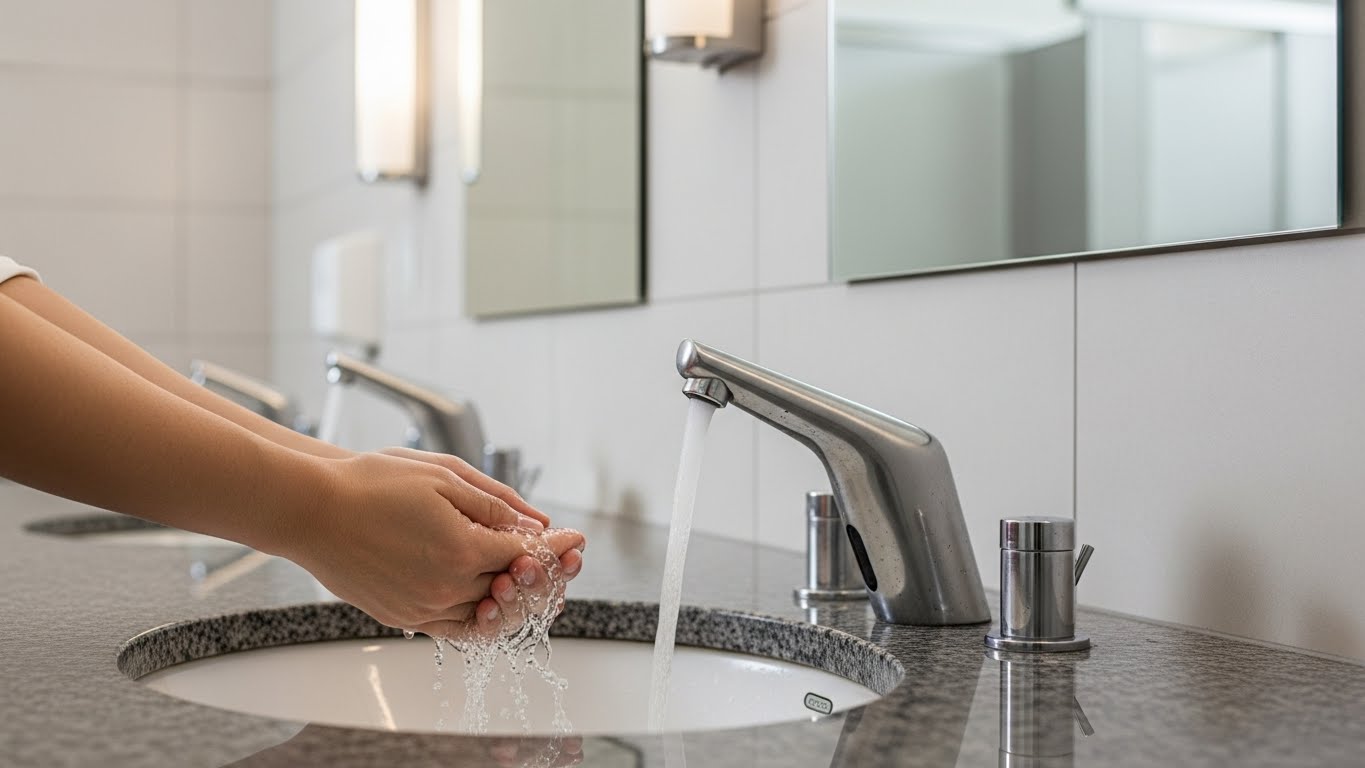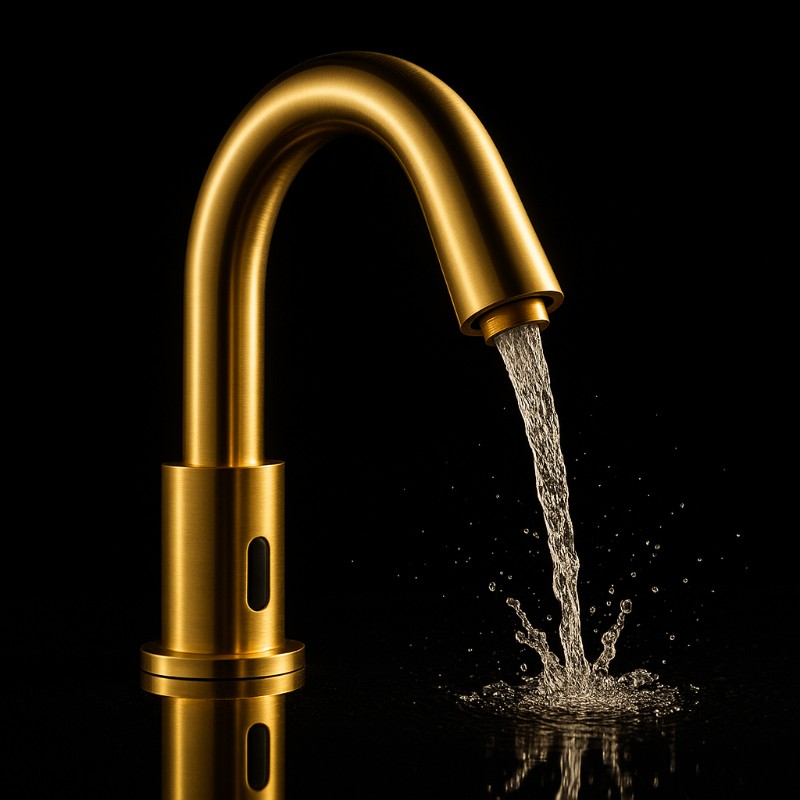Office Design • Hygiene • Water Savings • Durability
If any setting where office design dictates and functional health concerns meet is the corporate toilet. Over the past few years, sensor (touchless) faucets transitioned from “nice-to-have” technology to de facto standard in modern office fit-outs. Why? In short: cleanliness awareness, user experience, and the need for a single common durable design language that speaks across the symmetry of a high-end office environment. With designers and facility teams looking for reliable partners and spec-compliant solutions, sites like commercialtouchlessfaucets.com are making that process easier, faster, and more transparent.

Cleanliness is becoming a design imperative
Begin with the obvious: touchless is cleaner. Taking one of the primary touchpoints away—faucet handles—sensor faucets negate cross-contamination and the appearance of grime. That is not just actual infection control, but confidence from staff. People judge a whole workplace by its bathrooms (justice or injustice), and the appearance of up-to-date, contactless fixtures at once speaks volumes about care and professionalism.
But not everything is “touch less.” Sensor faucets also regulate run time and temperature settings to facilitate compliance for improved handwashing. Thermal flush technology is applied in some models to prevent stagnation—another behind-the-scenes health benefit for building health.
Water savings appearing on the bill
Designers have long weighed looks against sustainability requirements. Sensor faucets eliminate having to make a choice between the two. Low-flow rates and auto off conserve wasted water, especially during peak business hours in large office settings. Cumulatively over the life cycle of a Class A building—to support ESG reporting and LEED and WELL certifications without compromising sharp looks tenants demand.
Pro tip: look for product specs where you can customize flow rate (e.g., 0.35–1.0 gpm) by space. Executive floors, wellness rooms, and high-traffic core areas generally need varying settings. Sites like commercialtouchlessfaucets.com make it simple to compare and dial in the ideal balance.

Aesthetics collide with durability
The new sensor faucets do away with the “institutional” look. Slim profiles, angular silhouettes, and PVD finishes (matte black, brushed nickel, satin brass) match up with contemporary bathroom color schemes—warm stone, microcement, and wood-grain partitions are just a few. The task is coupling that look with commercial-level materials: metal casings, vandal-resistant aerators, and sealed electronics located out of splash areas.
Specifiers should examine finish warranties and scratch resistance, especially in areas of unassigned seating that see heavy traffic. Much of the extensively screened catalogs across commercialtouchlessfaucets.com emphasize finish performance and lifecycle ratings to prevent designers from having to sort through.
Smart maintenance, happier facility staff
Nobody likes to turn a restroom into a service bay. The most clever facilities-friendly sensor faucets on the market are:
- Top-access components so maintenance doesn’t require crawling under counters.
- Battery monitors (or hard-wiring alternatives) to prevent downtime.
- Filter screens for easy trash removal in legacy buildings.
- Quick-swap module solenoids a necessity on large portfolios.
If you have more than one location, a standard few SKUs simplify stocking, training, and response. A dedicated marketplace like commercialtouchlessfaucets.com makes that standard set easy: you can compare families, see compatible mixing valves, and ensure finish/size consistency across locations.
Convenience of access and end user experience through design
Touchless is inherently universal. It decreases dexterity and grip strength demands and can be wall-mounted to meet ADA reach-range compliance. Aside from compliance, good UX matters: smooth-ramp flow of water (no splash shock), consistent detection across a spectrum of hand sizes and skin tones, and low delay times that aren’t jarring but feel natural. Soft solenoids and laminar smooth flows work into perceived quality—imperceptible signals tenants sense even though they can’t define them.

Data (if you need it), ease (if otherwise)
The market is splitting into two useful channels:
- Low-cost, long-life “set-and-forget” faucets with longer battery life and less adjustability—ideal for cost saving and reliability.
- Connected, IoT-capable faucets that report usage, battery status, and health data to a dashboard—ideal for big campuses and data-heavy activities.
Both are great choices; it just depends on your building strategy. If you’re experimenting with intelligent building analytics, employ open protocol models with open APIs. For bulletproof simplicity, employ proven, non-networked lines. Either way, commercialtouchlessfaucets.com enables you to drill down to the level of technology you want to support.
Recommended retrofit with no hassle
Not all trophy towers are ground-up office buildings. Most are retrofit conditions where deck thickness and rough-in levels are realities, not fantasies. Sensor faucet lines now come in deck-mount and wall-mount configurations with flex power (battery, plug-in, or transformer) and remote-mount control units that bridge tight vanities. Look for adjustable sensor ranges to bridge glossy counters or extra-deep basins that will stymie lower-cost sensors.
If in doubt, spec from a line that carries companion soap dispensers, flush valves, and bottle-fill stations. Coordinators facilitate coordination and delivery—and provide that “designed” appearance without custom millwork.
What to verify before spec
- Flow rate and type of aerator: Spec laminar to prevent splashing, particularly with shallow basins.
- Finish and warranty: Coordinate to hardware in the building and verify surface test standards.
- Power plan: Battery maintenance intervals vs. hard-wire convenience.
- Maintenance access: Hours saved by top-serviceable parts across a portfolio.
- Valve compatibility: Verify mixing valve compatibility and local temperature code compliance.
- Lead-free & certifications: Verify commercial installation compliance and project-specific credits.
These spec points are easy to compare side by side while shopping from a concentrated catalog such as commercialtouchlessfaucets.com instead of digging through generic plumbing websites.
The Bottom Line
Touchless toilets were once a trade-off between style and cleanliness. Not any longer. High-end models deliver cleanliness, water conservation, and cutting-edge style that creates tenant satisfaction and brand reputation. For building owners, they save water and reduce maintenance fees. For architects, they complete the restroom narrative with details that echo the harmony of the office. And for the workers? They just feel more pleasant to use.
If you’re planning a restroom refresh or a full corporate fit-out, explore curated options, finish families, and spec sheets at commercialtouchlessfaucets.com. You’ll find the tools to compare, standardize, and roll out touchless—without sacrificing design intent or operational sanity.
Sensor Faucets in Corporate Restrooms
| Category | Key Takeaways |
|---|---|
| Hygiene | Touchless = cleaner, supports compliance, thermal flush prevents stagnation. |
| Water Savings | Auto shut-off, optimized flow rates (0.35–1.0 gpm), supports LEED/WELL. |
| Design & Durability | Gloss finishes (black, brass, nickel), commercial-duty internal components, solid warranties. |
| Maintenance | Top-accessible parts, battery indicators, debris filters, modular solenoids, SKU standardization. |
| Accessibility/UX | ADA compliance, ramped flow, reliable detection, silent & smooth streams. |
| Tech Options | Simple long-life faucets vs. IoT-enabled faucets with usage analytics. |
| Retrofit | Deck/wall-mount, power flexibility, remote boxes, adjustable sensors. |
| Spec Checklist | Flow rate, finish, power plan, maintenance accessibility, valve codes, certifications. |
| Bottom Line | Clean, sustainable, stylish, low maintenance, enhances tenant satisfaction. |
